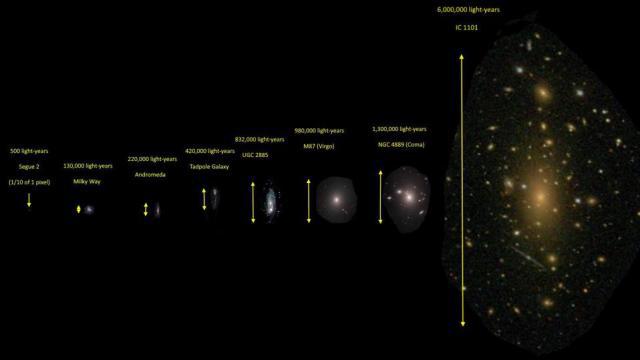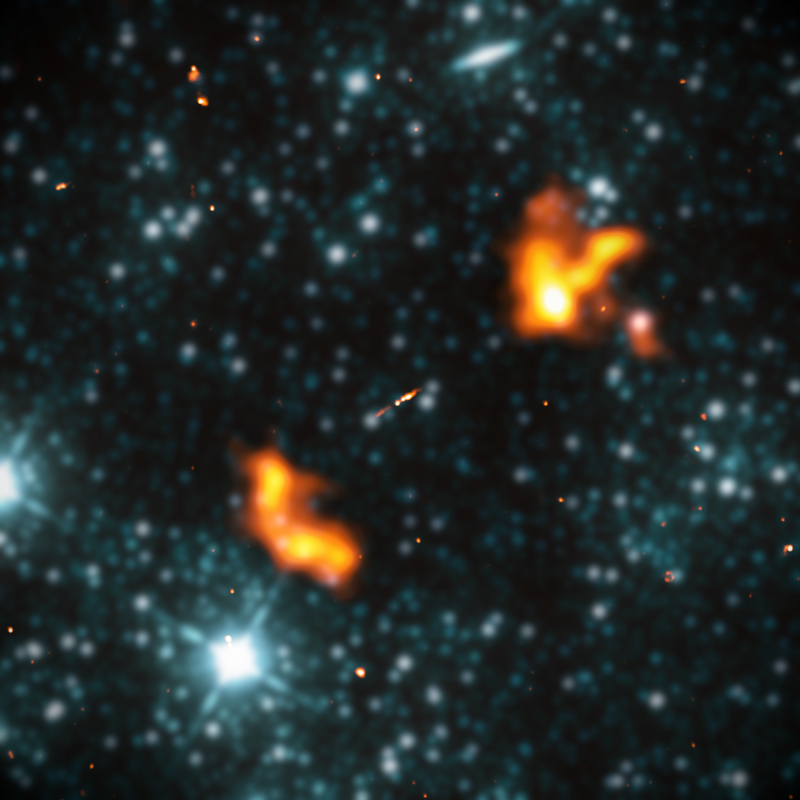*This text was written by a columnist. Technology World; finally learn more.
Ever since humanity began contemplating the sky in a history lost for centuries, we’ve been asking ourselves: How big is all this?
As we progressed in mind and tools, we were able to put things into perspective by measuring and estimating distances and sizes close to Earth, the Solar System, and then the Universe.
For example, while the first estimates of the diameter of our planet and the distances between Earth and Moon and Earth and Sun were made in the last centuries of Antiquity, with the advent of Kepler’s Laws and Newtonian mechanics, the scientific revolution reached these distance measurements into the deep solar system and neighboring stars in our galaxy.
When we talk about even larger astronomical scales in cosmic perspective, galaxies prevail. Penetrating into space, these vast star islands consist primarily of stars, dust, gas, and lots and lots of dark matter. Typical sizes range from a few hundred to several million light-years across, and their masses range in staggering units of hundreds of billions of solar masses.
The Milky Way, for example, is a typical spiral galaxy about 100,000 light-years across. The Sun is just one of the 400 billion stars that exist within its borders. For the universe, this is a relatively large system: most of the galaxies found are smaller than the Milky Way and usually have less than 10% of the number of stars.
The smallest known galaxy, Segue 2, is only 110 light-years across and contains only about 1,000 stars. It is even smaller than some globular star clusters and thousands of other stars several thousand light-years across.

However, such small galaxies are relatively rare. We don’t need to go very far to talk about galaxies larger than our own because there is a real titan in our galactic environment. About 2.5 million light-years away from here, the Andromeda galaxy, 220,000 light-years in diameter, is more than twice the size of the Milky Way.
Over the course of a galaxy’s evolution over time, several factors change its morphology (and thus its size). One of these main factors is their gravitational interactions with each other and with the environment they are in. These interactions often significantly distort and expand galactic expanses, sometimes even doubling their original size.

In 2011, a massive galaxy was discovered at the center of the Abell 2029 galaxy cluster: IC 1101, a supergiant elliptical galaxy about 6 million light-years in diameter, 1 billion light-years from us! This value represents such a large region in the Universe that if the Milky Way were in place, it would completely cover the ten nearest galaxies here, including the Small and Large Magellanic Clouds and the Andromeda Galaxy.
Astronomers estimate it contains about 100 trillion stars: this number is so large that, counting, it would take more than 3 million years (assuming one star per second).

But IC 1011 lost the record for the largest galaxy discovered in the Universe last year. In February 2022, an international team of astronomers reported the discovery of a monstrous galaxy: 3 billion light-years away, Alcyoneus, a massive radio galaxy reaching 16.3 million light-years in space, is the largest structure of galactic origin. known to date.
Alcyoneus consists of a host galaxy and a system of extremely powerful jets emanating from its central supermassive black hole, and is one of the intriguing mysteries of the Universe. Their discovery highlights how little we understand about these cosmic giants and what mechanisms drive their unusual growth.

If there are bigger galaxies out there, it’s only a matter of time before we find out!
Nicolas Oliveiracolumnist for Technology WorldHe holds a degree in Physics and an MA in Astrophysics. He is a professor and currently doing his PhD working with galaxy clusters at the National Observatory. He has experience teaching Physics and Astronomy and researching Extragalactic Astrophysics and Cosmology. It acts as a popularizer and scientific communicator aimed at the dissemination and democratization of science. Available on social networks like Nicolas @nicooliveira_.
Source: Tec Mundo
I am Bret Jackson, a professional journalist and author for Gadget Onus, where I specialize in writing about the gaming industry. With over 6 years of experience in my field, I have built up an extensive portfolio that ranges from reviews to interviews with top figures within the industry. My work has been featured on various news sites, providing readers with insightful analysis regarding the current state of gaming culture.













